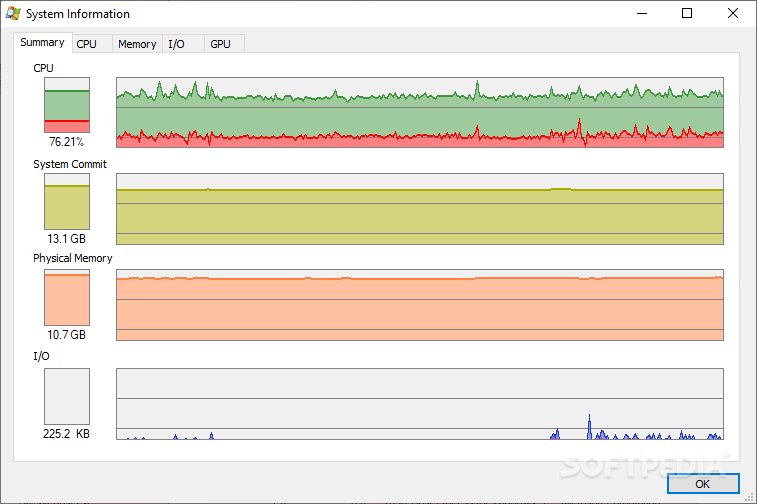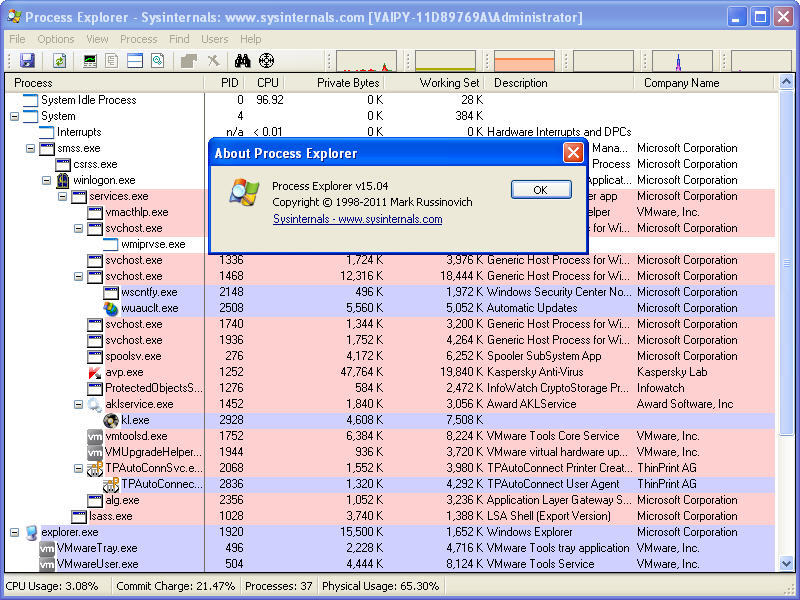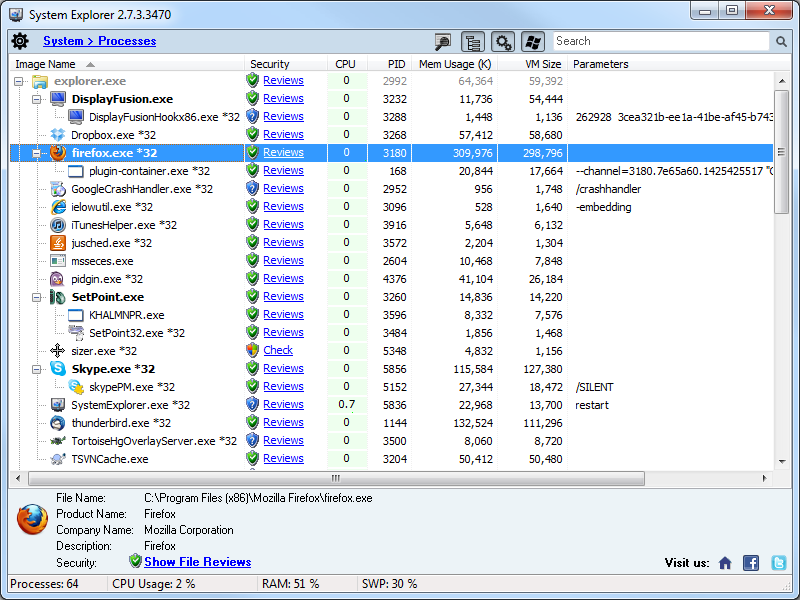


There is an option (in handle context menu) to close a selected handle.There is a Find command which allows for searching a handle or DLL which can be used to identify the process(es) holding a file lock.There is a command to create a process dump (mini or full) (Process => Create Dump).In properties of a process a user can view the process's threads and threads' stack traces.(View => Lower Pane View => Handles) an option Show Lower Pane has to be switched on There is an option to display processes' handles which includes named mutants, events, sockets, files, registry keys etc.There is an option to display DLLs loaded by process (View => Lower Pane View => DLLs) an option Show Lower Pane has to be switched on.There is an option (in a process's context menu) to verify a process in VirusTotal.For example, when the pointer is placed over a svchost.exe, it will tell if it is the one performing automatic updates/secondary logon/etc., or the one providing RPC, or the one performing terminal services, and so on

Disambiguates service executables which perform multiple service functions.Interactively set the priority of a process.Interactively alter a service process's access security.Ability to raise the window attached to a process, thus "unhiding" it.Live CPU activity graph in the task bar.Ability to display an icon and company name next to each process.
Process explorer portable software#
The open source software "Process Hacker" has been developed with the aim to replicate its functionality.
Process explorer portable windows#
The current version runs on Windows Vista and upwards. Windows XP is supported up to version 16.05. Versions of Process Explorer up to 12.04 work on Windows 2000 versions 14.0 and higher do not require credui.dll (which is only available since Windows XP/2003). Until 2008, Process Explorer worked on Windows 9x, Windows NT 4.0 and Windows 2000. Process Explorer began in the early Sysinternals days as two separate utilities, HandleEx and DLLView, which were merged in 2001. Like Task Manager, it can show a process that is maxing out the CPU, but unlike Task Manager it can show which thread (with the callstack) is using the CPU – information that is not even available under a debugger. As another example, it can show the command lines used to start a program, allowing otherwise identical processes to be distinguished. This can be used to track down what is holding a file open and preventing its use by another program. For example, it provides a means to list or search for named resources that are held by a process or all processes. Process Explorer can be used to track down problems. It can be used as the first step in debugging software or system problems. It provides the functionality of Windows Task Manager along with a rich set of features for collecting information about processes running on the user's system. Process Explorer is a freeware task manager and system monitor for Microsoft Windows created by SysInternals, which has been acquired by Microsoft and re-branded as Windows Sysinternals. com /en-us /sysinternals /downloads /process-explorer If a process is hiding in the background, you can click Bring to Front to view its window (assuming it has a visible window).Windows 8.1 / Windows Server 2012 and later If a process is automatically starting with your computer, Process Explorer will tell you where it’s configured to do so. Detailed Process Properties: To view information about a process, right-click it and select Properties.This can help you understand exactly what the process is and where it came from. You can right-click any running process in the list and select Search Online to quickly search for it online. Search Online: This feature is present in Windows 8’s new task manager, but it showed up in Process Explorer first.We won’t focus on all these features – we’ll focus on cool things you can do with Process Explorer that you can’t do with the Windows Task Manager. You can right-click a process to kill it, change its priority level, or set its CPU affinity and force it to run on only a specific CPU. Process Explorer is packed with features, including all the ones you’d expect from the Windows Task Manager.


 0 kommentar(er)
0 kommentar(er)
